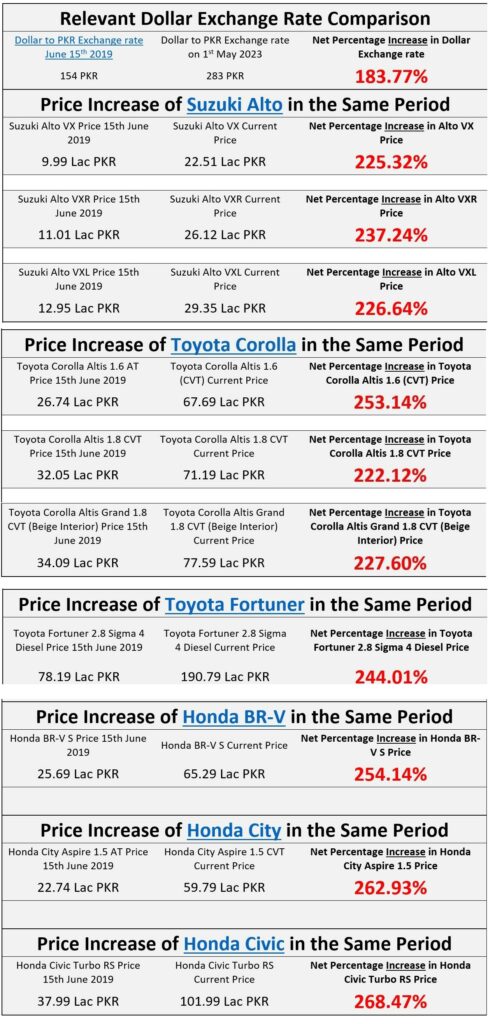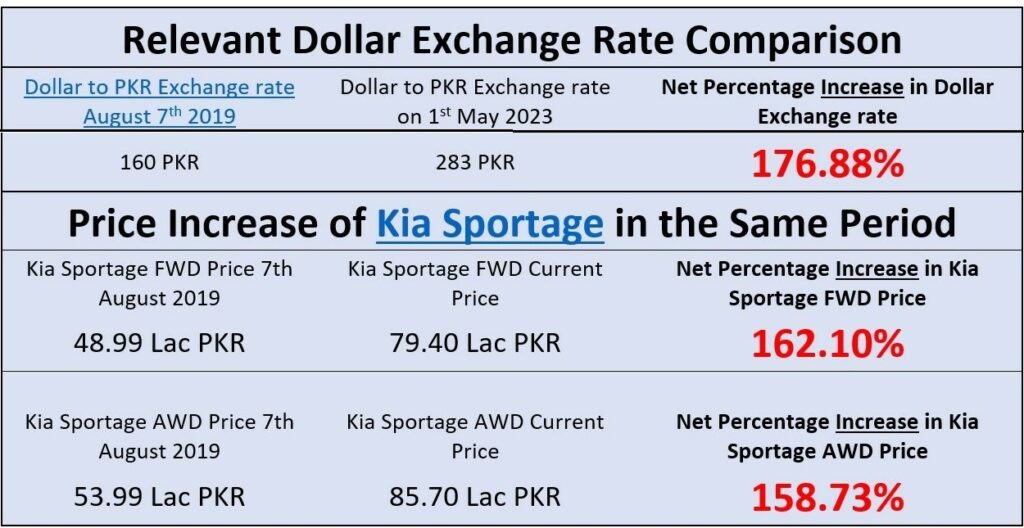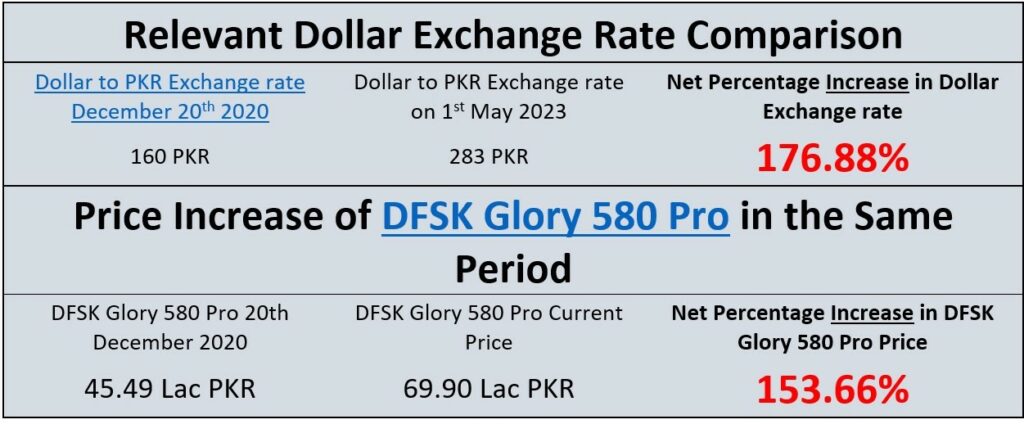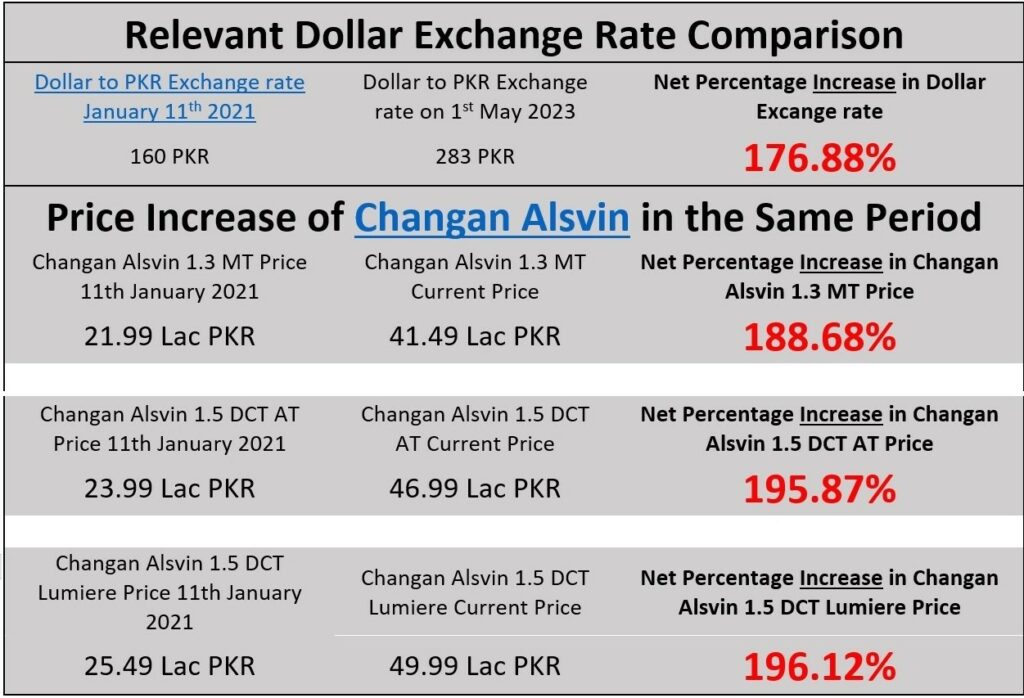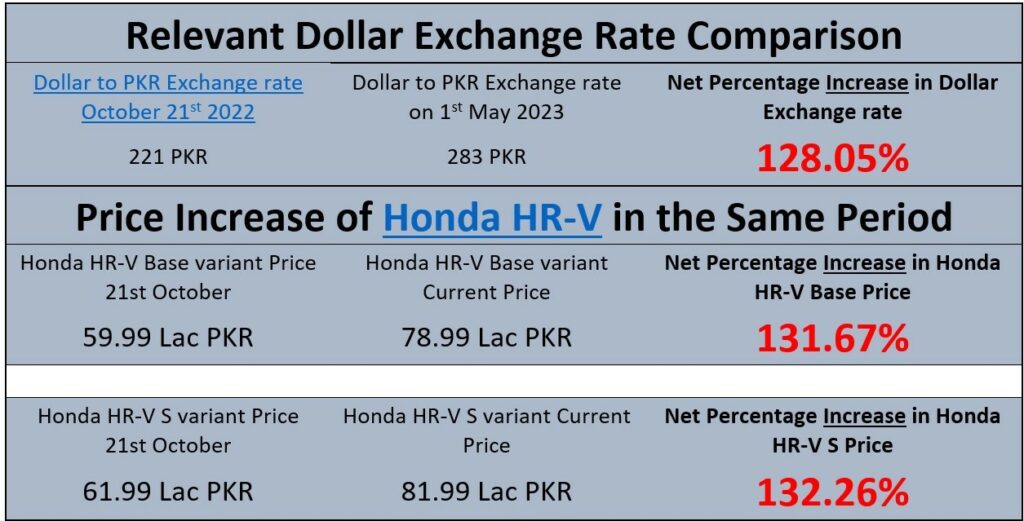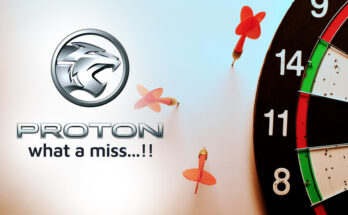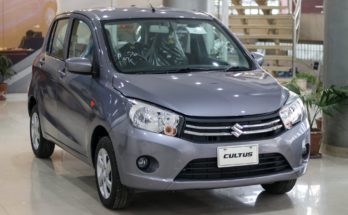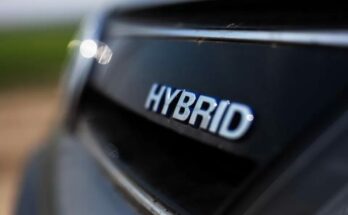Part One: The CKD Price Hike Conundrum
We have seen the prices of new vehicles in Pakistan go through an unprecedented series of price hikes within the last couple of years alone. We have been given all sorts of reasons ranging from freight charges to chip shortages to currency devaluation to closed/difficult-to-obtain LCs and various combinations of all these factors to justify the hikes. However, most recently, it is the currency devaluation to which the bulk of these price hikes have been attributed; a situation made worse by the ongoing political turmoil in the country. In these kinds of conditions, it will not be an a-miss to assume that another price hike by the auto assemblers is not far off. Something about the scenario gives off the impression that a price increase is imminent.
There have been many articles discussing price hikes for locally assembled vehicles. However, what I would like to examine is, are these price hikes in line with the currency devaluation and whether are they justified. What is the percentage correlation between the dollar price hike and the locally assembled vehicle price hike? To that end, in this article, I have prepared a simple price percentage comparison to let us see that correlation
or lack thereof.
In the following articles, we will also be looking at the prices of some very prominent CBU imports to let us see how much we are paying or rather overpaying for them here in Pakistan. And lastly, we will also be examining some of the reasons the local assemblers state for the hikes and what might be some solutions to these problems.
Clarification: Setting the Stage
I started this series of articles a while back. In the interim, we all know what has transpired in the country; because of this, the dollar price has become very erratic. However, I have opted to stick with using the prices on May 1st, 2023 in this comparison as I had originally done so. The reason is simple. In this article, we are talking about vehicle price hikes that happened a couple of months ago. The next price hikes are still to come. That will be a comparison for another article when the next round of price hikes by the local assemblers happens. For now, the dollar rate on May 1st will more than suffice and will easily/clearly help me make my point.
Related: Pakistan Auto Industry – What Is Going On…?
Also, a couple of PKR or even ten, or a couple of currency devaluation percentage points or even ten, will not even get close to the percentage hike in car prices (as it stands even now) as you will not doubt soon see; especially in the case of the old Japanese three. I had wondered how best to go about sharing this data. To simplify, I have presented it in tabular form. I chose specific dates from which to start my comparisons. We will compare the Dollar rate and vehicle price on those dates in the past to what they were recently on May 1st. The dates are as follows:
- Table 1: June 15th, 2019 – This was the launch date for the new Suzuki Alto in Pakistan. I have
also used this date to reference the prices of other local Japanese cars. - Table 2: August 7th, 2019 – The launch date of the Kia Sportage in Pakistan. The launch price will be
compared to the current price. - Table 3: December 20th, 2020 – The launch date of DFSK Glory 580 Pro. The launch price will be
compared to the current price. - Table 4: January 11th, 2021 – The launch date of Changan Alsvin. Launch price will be compared to
current price. - Table 5: October 21st, 2022 – The launch date of the Honda HR-V. Launch price will be compared to
current price.
The Data:
I realize, not every model is represented here, but this was to give us a general taste of how things stand currently. If we closely study the percentage price hikes of the corresponding dollar rates compared to the vehicle prices in each table, we are presented with quite a colorful picture; especially in the case of the old Japanese brands. The average increase in dollar rate stands at 183.77% since June 15th, 2019.
However, when looking at the local Japanese vehicle prices, we see an average of over 220% to almost 270% increase in their vehicle prices. That is a substantial increase over the corresponding dollar rate hike. Even the alibi of high taxes cannot fly here because recently the RD on used and new cars has been abolished.

Then we come to tables 2, 3, and 4 which deal with the non-Japanese brands and we see that the price hikes are more in keeping with the dollar hike as they should be. In some cases, like with the Kia Sportage and the DFSK Glory 580 Pro, the price hikes of those SUVs are lower than the actual dollar price hike during the corresponding time. a pleasant surprise. The only non-Japanese brand that has shown a greater price hike in its vehicle when compared to the dollar hike is Changan with its Alsvin. But still, Changan seems to show a greater restraint than the local Japanese assemblers.
Related: Blame Where the Blame Is Due
The local Japanese assemblers cannot be given a pass on this one if their argument is “their prices are comparable to what the prices are in other nations”. That is simply not true. We have seen in many articles on this very blog how Pakistanis are overpaying for obsolete/older models; especially where the Japanese brands are concerned. Even if the models are current as in the case of the Suzuki Alto or Suzuki Swift or Honda Civic, we are overpaying for cars that are missing lots of modern features and technologies.

For example; if we talk about the Suzuki Swift, the only option is the older technology 1.2L engine in Pakistan. We do not get the 1L Boosterjet engine option which is more powerful, is better on fuel, and being a 1L engine, falls into a lower tax bracket. Thus, it would have also fallen into a better/ lower price bracket as well. Even the Suzuki Alto VXL, which is the top-of-the-line model in Pakistan, is the barebones/lowest version of the Alto you can buy in Japan. Again, just to emphasize the point, the lowest, most basic model in Japan is the top model in Pakistan. Even when talking about the
Civic (RS), we find that we are getting a very watered-down version as far as technology and safety are concerned. For example, we still only get two airbags in a car costing almost Rs 1 crore 10 lacs.
Related: The Sufferings of “Booking Open”… Is Pakistani Auto Consumer Protected?
We should be getting 4 or 6 airbags as standard with an electronically adjustable driver seat; features which are available as standard on this trim of the Civic in other markets. And the real kicker is when we look at the other brands in the local market, especially the Chinese ones, they are giving such features and much more in their SUVs which cost less than this compact sedan.

We can also see the example of the Pak-Suzuki Bolan and Ravi with origins unknown. These models are so old that their production has stopped at all Suzuki plants around the world. How Pak Suzuki still sources its CKD kits is unclear. A fact that we saw discussed on this blog not long ago. On top of all that we have some serious quality issues with locally assembled vehicles. We will not even bother discussing old and extremely obsolete vehicles like the Bolan or Ravi. However, in more expensive vehicles such as the Civic, quality issues and parts failure have been commonplace in the last few generations.
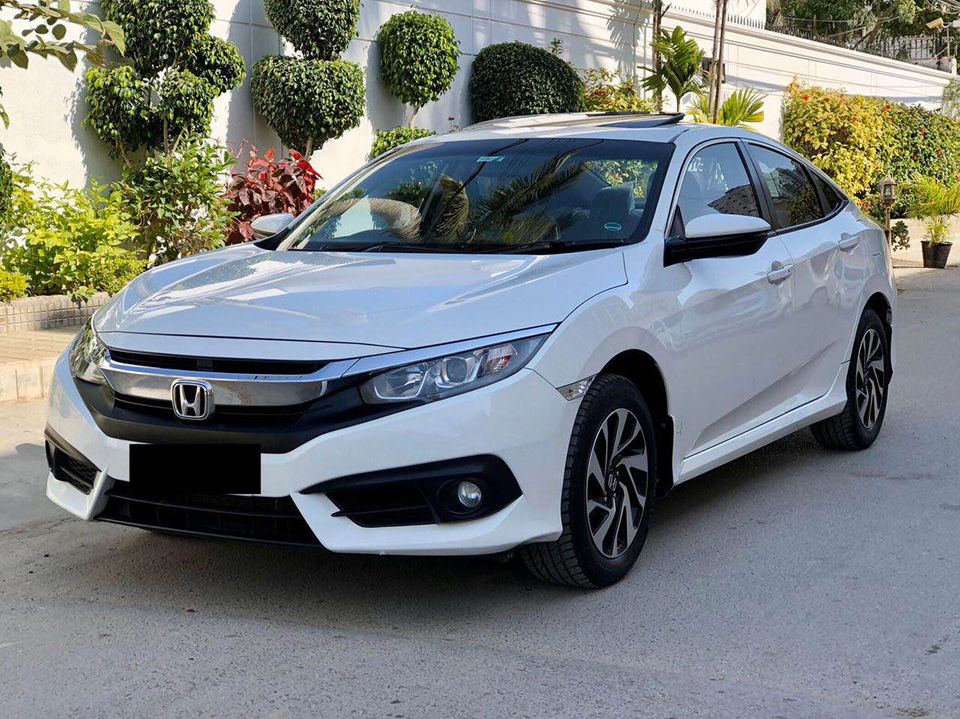
Especially, most recently, the Civic 10th Generation, or as it is locally known, the Civic X. It had some very major problems ranging from rear ABS Pump failure and transmission issues to having battery heat-up and alternator issues. However, the problem which to me was the most egregious on the Civic was designing the air intake, in multiple models, in such a location in the engine bay that it sucked up water even when wading through pretty shallow water and either damaged the whole engine block or only damaged the pistons if you were lucky. And lastly, serious underbody rust issues. A “quality” choice indeed.
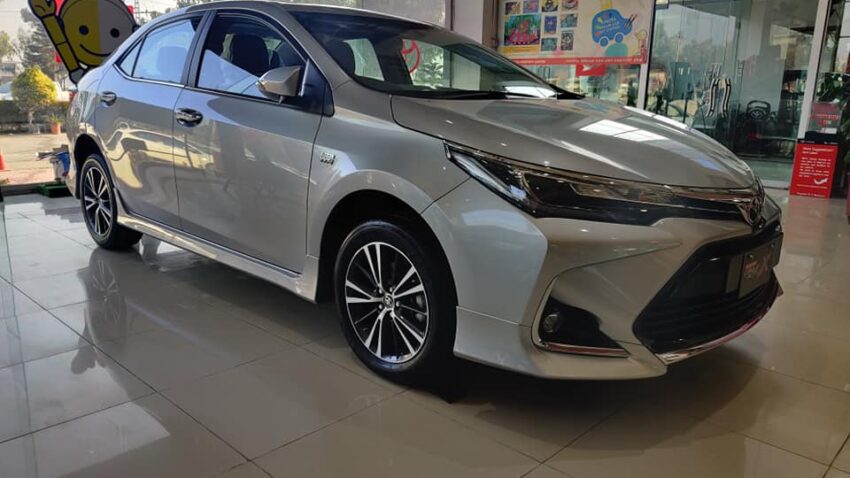
And what of the local Corolla? The whole car is the issue. We are overpaying for a 10-year-old car with very outdated and stripped-down technology and extremely questionable plastic bits bolted onto it. Those plastic additions are marketed as a refreshing facelift; however, they only help in making it look very cheap and very after-market and not at all factory. An outdated model for a very high price. In other nations like the Philippines, Indonesia, Malaysia, etc., people are paying for the 12th-generation Corolla Hybrid what we’re paying for the non-hybrid 11th generation. “Premium” indeed.
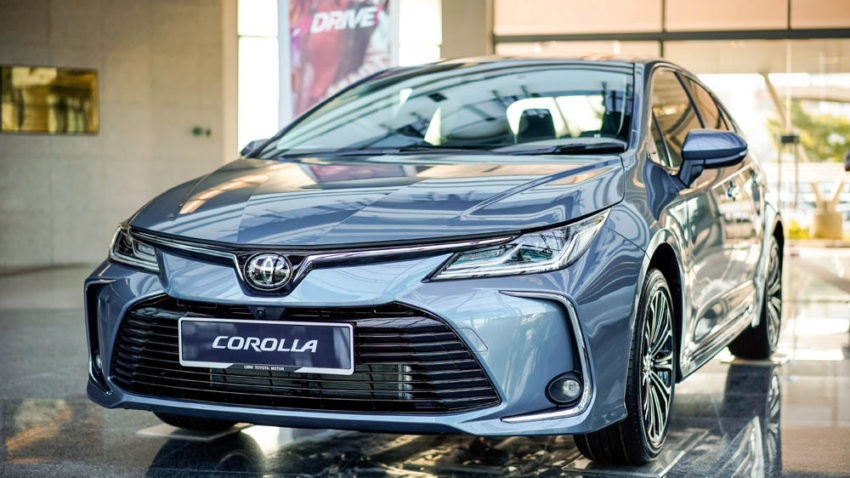
And that is not all. Cars and SUVs like the Hyundai Elantra, Hyundai Tucson, Kia Sportage, Kia Picanto, Kia Picanto, and Honda City are all models that are either obsolete or have been discontinued worldwide except for in Pakistan; making us the official dumping grounds for old & discarded models. Why is that? Is it just so these companies can clear old inventory?
Related: Someone’s Trash is Another One’s Treasure
But the Local assemblers, especially the Japanese, are not stopping there. That would be too easy. They seem to have decided to go for broke where prices are concerned. In part two of this four-part opinion piece, we will look at a couple of examples of the CBU units that are imported by them for local sale; A quick revisit to an older opinion piece I shared a while ago.
Contributed by: Muhammad Ali Khan– A guy who is passionate about cars and concerned about the state of the auto sector in the country. 
Read other articles in this series:

CarSpiritPK welcomes Guest Posts. If you have the ability to generate quality content and can write some relevant and useful piece of information to be shared with our readers, feel free to contact us at: [email protected] Send you emails titled as (Guest Post submission)

